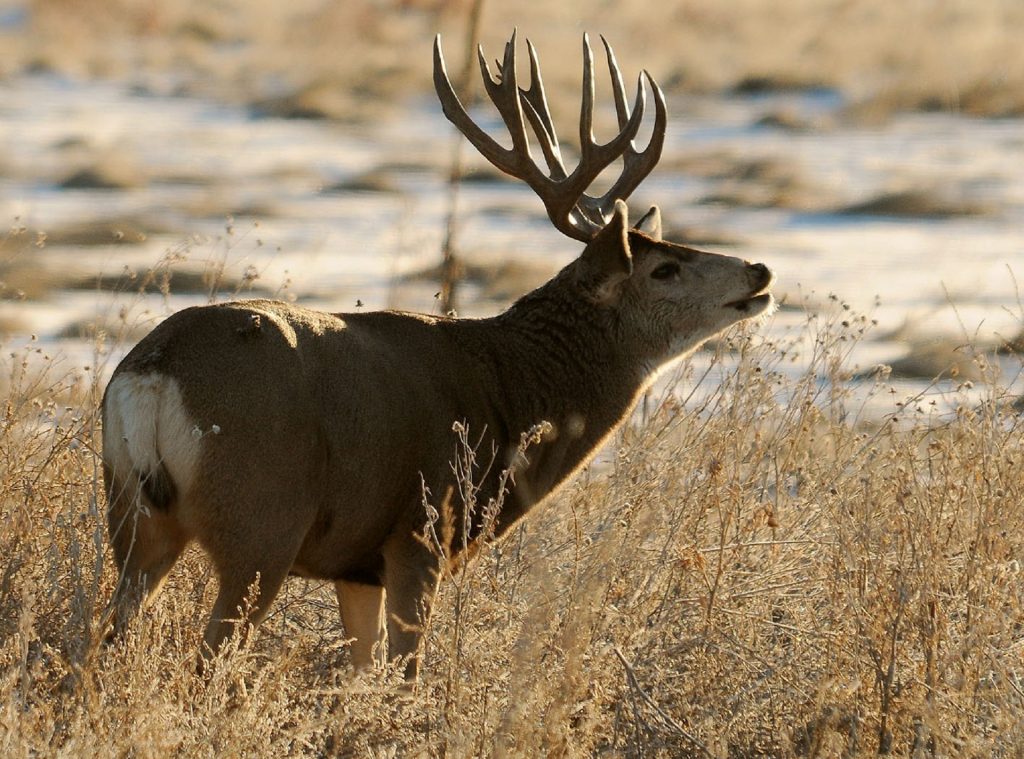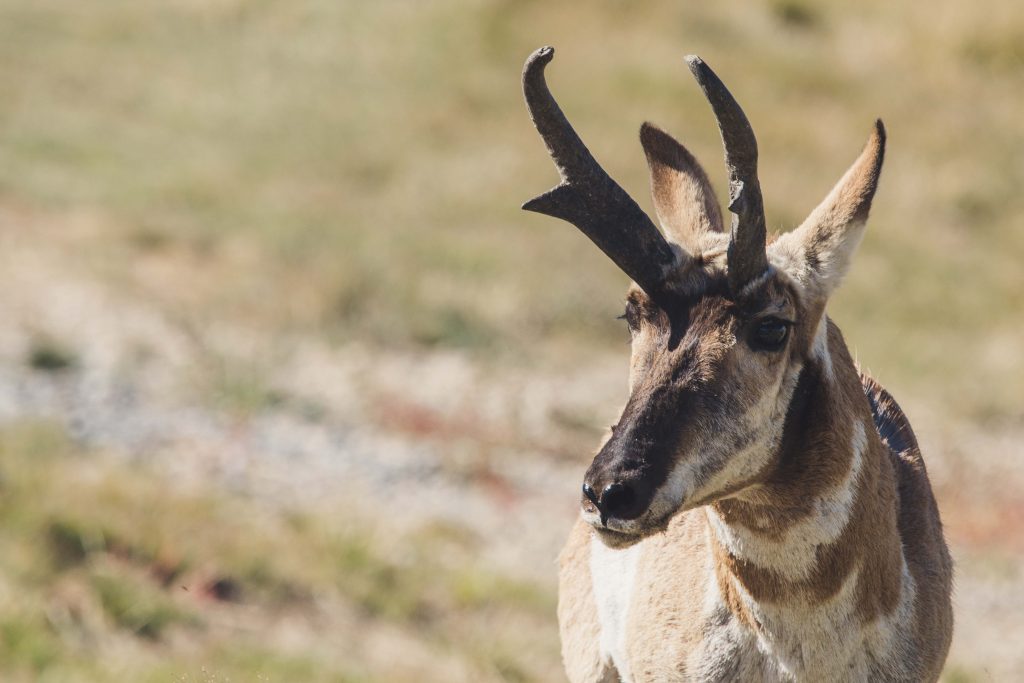Demystifying the Nevada Big Game Draw

The 2019 Nevada Big Game Draw deadline is—dare I say it?—drawing closer. The big game main draw application period ends on April 29, 2019. Thousands of state residents and non-residents enter the draw each year for the chance to test their luck and skill at hunting big game. A tag from the draw is your ticket to one of the most memorable hunting expeditions of your life. This comprehensive guide reveals everything you need to know about the Nevada Big Game Draw.
The Purpose of Nevada Big Game Draw
Distribution of Big Game Tags
State wildlife biologists and the Nevada Department of Wildlife (NDOW) pay close attention to population trends and hunter success rates to determine the yearly distribution of tags to applicants. The Nevada Board of Wildlife Commissioners sets an annual tag quota per species to manage populations. This quota determines the number of tags that NDOW allocates to resident and non-resident hunters each year.
Regulate Supply and Demand
If a large number of hunters want to hunt a given species in a unit where only a handful of tags are available, it lowers the chance of winning a tag for that unit. NDOW sets tag quotas to account for the disparity between supply and demand to ensure that the species’ population can adjust for the following year.
Factors That Affect Big Game Species Populations

Habitat
The habitat conditions of a species can affect tag quotas for the draw. For example, in 2017, wildfires severely affected the habitat of mule deer in and around the Reno-Sparks area. The first wildfire started in August 2017, north of Doyle, California. It burned eastward through the State Line Peak area in Hunt Unit 021 and continued into Cottonwood Canyon on the north end of Virginia Mountain in Hunt Unit 022. Because of the wildfire, both units experienced significant reductions in tag quotas the following year.
Nevada has made great strides toward restoring the damage caused by these wildfires, but the residual damage continues to impact the mule deer population. In this case, the tag quota for mule deer is determined, in part, by environmental factors. Limitation of tags in these affected units helps ensure healthy mule deer populations for future hunting seasons.
The Logic Behind the Nevada Big Game Draw
Every Applicant Has a Chance to Draw
In Nevada, everyone has a chance in the draw. Think of the draw as a raffle. You get one “raffle ticket” when you apply for the draw. First-time applicants can draw one of Nevada’s tags, though their chances of winning are lower than those of someone entering the draw with additional bonus points. More information on bonus points can be found in the following sections of this guide.
How the Draw Process Works
During the draw, the system reviews all applications and assigns a random number to each one, based on the number of points tied to each application. Once the system distributes the random numbers across all applications, it determines the lowest random number assigned to each application.
The system then begins to award tags to the lowest randomly numbered applications. The system looks at each application in random number order (regardless of species). If there is still a quota available for the first hunt choice on that application, then the system awards it to that applicant. If there are no more available tags for that applicant’s first choice, then the second choice is reviewed, followed by the third and so on. If no allowance is available for all options in an application, then the applicant is marked as unsuccessful for a tag.
Bonus Points: Increase Your Odds
How Bonus Points Work
Bonus points act as additional “raffle tickets” for the draw. If you don’t draw a tag, Nevada allocates you a bonus point, and your odds increase the following year. Bonus points are awarded based on species categories. Applicants can receive one bonus point per species category per year. The categories are as follows:
| Antlered mule deer and Antlerless mule deer* | Antelope (horns longer than ears and horns shorter than ears) | Antlered Elk, Antlerless Elk, and Spike Elk |
| Mountain goat | Black bear | Wild turkey |
| Nelson (Desert) Bighorn Sheep (Ram and Ewe) | California Bighorn Sheep (Ram and Ewe) | Rocky Mountain Bighorn Sheep |
*Junior hunters accrue points for Junior antlered/antlerless hunts with their point total converting to the Regular Antlered Mule Deer Category once turning 18.*
How Bonus Points are Factored Into the Draw
For each bonus point that you accumulate, Nevada squares that number (^2) and adds one (+1) to determine how many entries you will receive for the current year’s draw. If you don’t have a bonus point for a particular species, you will still receive 1 entry in the draw. If you have five bonus points for a specific species, you will receive 26 entries (5^2 + 1 = 26). Your odds increase with the number of bonus points you accumulate.
For each species draw you apply for, Nevada squares the number of your accumulated bonus points (^2) and adds one application point (+1) to determine how many entries you will receive.
A hunter’s bonus points revert to zero in the proposed species category if he or she is successful at obtaining a tag or fails to apply for two consecutive years. If an applicant requests and receives a hunting license refund, points are not earned.
Purchasing Additional Bonus Points
Hunters may buy bonus points without applying for a tag for a non-refundable $10 application fee. The application fee covers each bonus-point-only application. Applicants often think of this as an investment in their application for next season. It is required that you purchase a hunting license before applying for any big game permit or bonus point application. The hunting license can be purchased as part of the application.
The Nevada Big Game Draw: 4 Big Reasons to Apply

Huge Trophy Potential
Most large, mature bulls have main beams close to 50 inches long. Approximately 35 to 45 percent of the harvest in Nevada consists of elk bulls with 50-inch main beams or greater. More than one-third of the state’s bull elk population falls within this range. Nevada’s game management strategy consistently produces mature elk bulls. As a result, hunters fortunate enough to draw a Nevada tag have excellent odds of harvesting a sizeable elk.
In some Nevada units, nearly one-half of elk bull harvests are classified as large, mature bulls with beams close to 50 inches long.
If you aren’t convinced, it’s worth noting that Nevada’s White Pine County has ranked as the No. 4 county in the nation for Boone and Crockett scoring submissions in recent years. Only two counties in Arizona and one county in Wyoming had more Boone and Crockett scoring submissions.
High Success Rate for Nonresident Hunters
In Nevada, non-resident hunters have high success rates for elk hunting. In 2017, non-residents had a higher success rate in Nevada than non-residents who hunted in Arizona, Idaho, and Montana. If you're an avid elk hunter and a non-resident, the Nevada Big Game Draw is an opportunity to consider.
No Upfront Tag Fees
Draw applicants are not required to pay any tag fees upfront in Nevada. NDOW, however, collects tag fees from winning applicants only after tags have been awarded. In contrast, some states require tag fees upfront and issue refunds to unsuccessful applicants once the draw has been completed. For hunters who prefer not to have their funds tied up for the duration of the draw process, Nevada’s draw application is an attractive option.
You Can't Win if You Don't Enter the Draw
If your goal is to hunt big game in Nevada, you’ll need to apply for the Nevada Big Game Draw. You can’t receive a tag if you don’t apply! Remember, the chances of pulling a tag in Nevada increase over time with bonus points. The best part about hunting the West—Nevada or otherwise—is that you have a relatively good chance of hunting somewhere every year, but only if you apply.
The Nevada Big Game Draw: Strategies to Increase Your Chances

Strategy 1: Build Up Your Bonus Points
While bonus points do not guarantee a tag in Nevada, accumulating them over time will significantly increase your chances in future draws. Bonus points are not required to enter the draw, building them is an effective strategy. Nevada’s draw system squares the number of points in your possession to determine the number of entries you will receive for the current year’s draw. For example, an applicant with 10 points will receive 101 entries in the draw, whereas a new applicant with only 1 additional point will receive 2 entries.
Strategy 2: Party Hunt Applications
What Is a Party Hunt?
Applications for certain species allow a “party hunt.” In a party hunt, multiple people can group themselves on a single application. This type of application is most common for people who go out in the field together. Drawing a party tag does not mean hunters must hunt together. Party hunting can have an impact on your chances of drawing a tag, both positively and negatively.
How a Party Hunt Application Works
On a party hunt application, the system takes the party applicants' bonus points, calculates the average point total and rounds it to the closest whole number. Applicants with fewer bonus points can create a party application with applicants possessing a high point balance to increase their overall average point balance. However, if you have hunters in your party with a lower point balance, the whole point average for the party is lowered, thus decreasing your chance of drawing a tag.
Additional Party Hunt Considerations
With party hunt applications, it is crucial to monitor your party size. Unlike some states, the Nevada draw does not exceed a unit’s tag quota to award a party. For example, if a party applies for a hunt with three tags available, and four hunters are in the party, the party has no chance of drawing the tag.
Conclusion
All hunters need to develop a draw strategy to gain access to the best hunting opportunities in Nevada. You can't hunt in Nevada if you don’t draw, and you can‘t draw if you don’t apply. If you’re not one of the fortunate winners in this year’s draw, you’ll receive a bonus point and a hunting license for Nevada’s over-the-counter tags. To learn more about the application process or to apply for the Nevada Big Game Draw, visit the NDOW licensing website.


